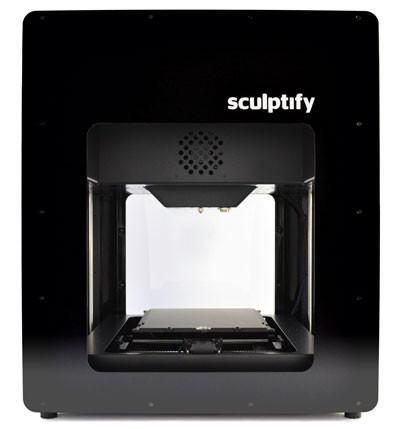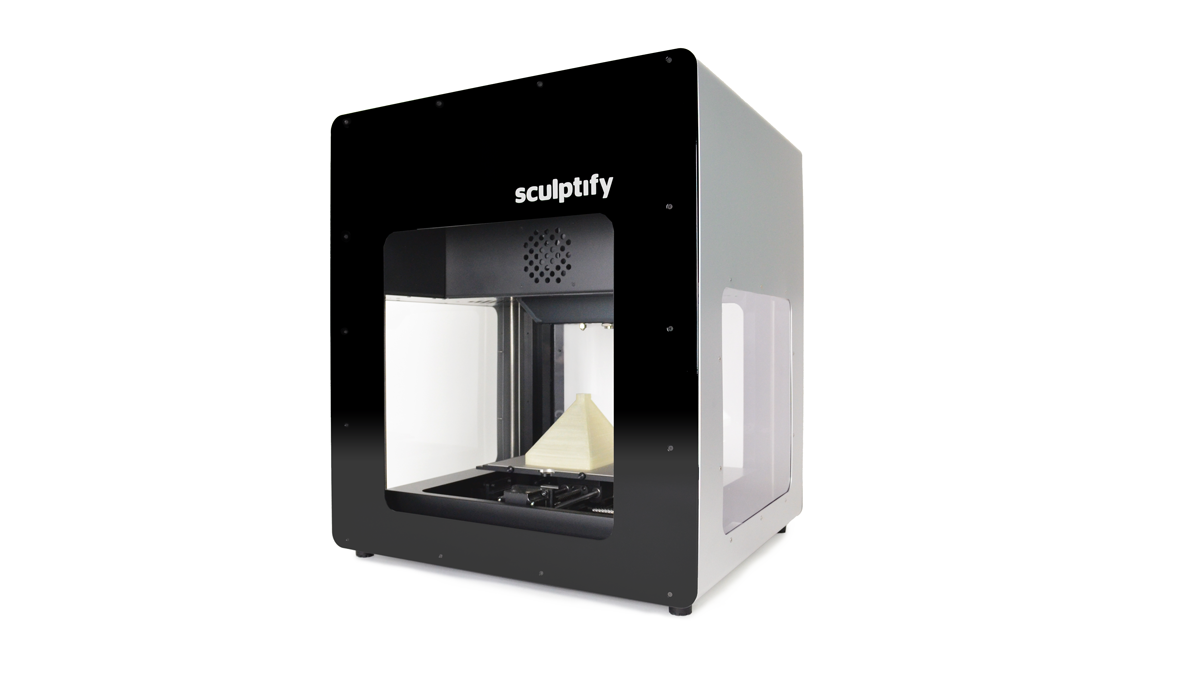 One of the most expensive aspects of running a 3D printer, day-in and day-out, is the cost of printing materials. Spools of filament run between $20 and $50 per kilogram, and this can add up very quickly.
One of the most expensive aspects of running a 3D printer, day-in and day-out, is the cost of printing materials. Spools of filament run between $20 and $50 per kilogram, and this can add up very quickly.
Back in May, we broke a story about a company called Sculptify, that was planning on releasing a 3D printer capable of printing directly from pelletized filament. Rather than requiring expensive spools of filament to print with, this printer utilizes a special ‘FLEX’ (Fused Layer Extrusion) systems that allows it to take simple raw materials (pellets of plastic), melt it down and 3D print the objects you desire.
Today, Sculptify provided more details, as well as photographs to 3DPrint.com. This innovative new 3D printer has a name; The David 3D Printer. Not only is it able to print using this so called FLEX technology, but it also features commercial-grade components, which have been designed to provide versatility, accuracy, and speed. It also comes stocked with an easy loading system and removable print platform.
“David is an incredibly versatile device, that can be used by both consumers and prosumers alike,” said Slade Simpson, Sculptify Co-Founder and CEO. “Sculptify believes that for 3D printing to reach its fullest potential, printers need to be able to serve hundreds of different purposes. We think that FLEX technology is the next logical step in making this possible.”
Using the FLEX technology doesn’t only save users of the ‘David’ money, but it also permits users to print with many unique materials. One of these materials is thermoplastic polyurethane (TPU), which allows for the printing of flexible, bendable, and super durable objects. It is traditionally found in shoes, athletic gear, and smartphone cases. Some other uses of TPU include tool grips, RC tires, and flexible fabrics.
“We think that FLEX printing is going to open the door to hundreds of new applications in both the consumer and commercial sectors because of the unique, and growing material library — we are venturing into a new realm of 3D printing,” stated Todd Linthicum, President and Co-Founder.
Previously if someone wanted to 3D print objects using pellets of plastic or other materials, they would have to purchase a separate filament extruder, which would be used to create spools of filament. Those spools would then need to be fed into a 3D printer in order to print with. The David 3D printer allows users who wish to save money by printing directly from pellets of material, to simply feed the pellets into the machine and begin printing.
“David provides customers with the freedom to choose from an extensive selection of materials — which range from hard and durable to soft and flexible. By eliminating the dependence on filament, Sculptify can offer exotic materials and composites never before used in 3D printing,” said Luke Daniel, Director of Business Development.
So why in the world is this printer named “David”? The name came from a famous sculpture by Michelangelo. “It’s one of the most recognized works of art in the world, and reminds us that with the right tools, anything is possible,” explained Slade Simpson. “We have poured our hearts and souls into this printer for the past year and a half, and we are really excited to get it into people’s hands.”
Sculptify plans on launching a Kickstarter campaign for the David 3D Printer in the near future, although no date has yet been set.
What do you think? Would you consider purchasing a printer like the David, to 3D print directly from pellets of material? Discuss in the David 3D Printer forum thread on 3DPB.com
Subscribe to Our Email Newsletter
Stay up-to-date on all the latest news from the 3D printing industry and receive information and offers from third party vendors.
You May Also Like
3D Printing Unpeeled: New Arkema Material for HP, Saddle and Macro MEMS
A new Arkema material for MJF is said to reduce costs per part by up to 25% and have an 85% reusability ratio. HP 3D HR PA 12 S has been...
3D Printing News Briefs, January 20, 2024: FDM, LPBF, Underwater 3D Printer, Racing, & More
We’re starting off with a process certification in today’s 3D Printing News Briefs, and then moving on to research about solute trapping, laser powder bed fusion, and then moving on...
3D Printing Webinar and Event Roundup: December 3, 2023
We’ve got plenty of events and webinars coming up for you this week! Quickparts is having a Manufacturing Roadshow, America Makes is holding a Member Town Hall, Stratafest makes two...
Formnext 2023 Day Three: Slam Dunk
I’m high—high on trade show. I’ve met numerous new faces and reconnected with old friends, creating an absolutely wonderful atmosphere. The excitement is palpable over several emerging developments. The high...


































